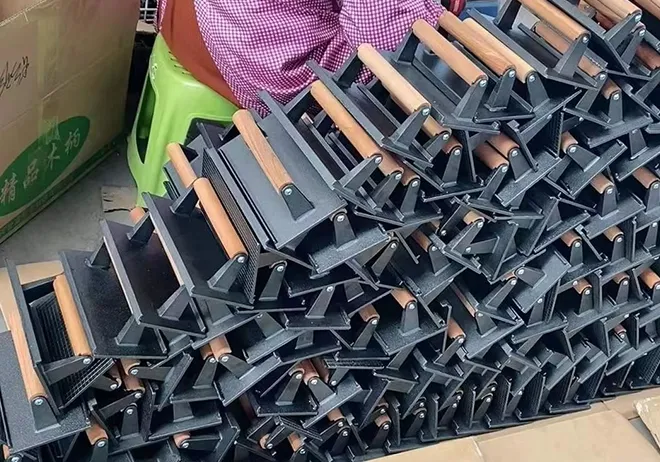The oil seal within the wheel hub assembly is crucial for preserving the lubrication of the wheel bearings and protecting them from premature wear and damage. Proper maintenance of the oil seal wheel hub is essential to prevent oil leakage and maintain the efficiency of the wheel assembly. Regular inspection and replacement of worn or damaged oil seals are vital to ensure the continued reliability and safety of the vehicle.
An oil seal normally consists of three basic components: the sealing element, the metal case and the spring. The purpose of the sealing element is to stop the fluid from leaking between the shaft and housing. The metal case will give rigidity and strength to the seal while it is being held in the bore or recessed groove. The garter spring ensures constant pressure and maintains the radial force to the shaft, flattening the sealing edge to a defined width. The garter spring maintains the radial force exerted by the sealing lip around the shaft surface. All materials must be selected depending on the environment in which the oil seal will function.
In automotive applications, the proper functioning of oil seals is crucial for maintaining the performance and longevity of critical components. Trailer hub oil seals and Tora oil seals, among others, are essential for preventing oil leakage, minimizing friction, and protecting internal components from wear and damage. High-quality oil seals contribute to the overall efficiency, safety, and reliability of vehicles and machinery.
The lip is specially designed to ensure the oil seal works effectively with the different forces that arise during rotation. Many different designs and materials are used, so countless types of oil seals are available. These are chosen according to the application; pumps, gearboxes, wheels, and many other rotating applications where fluids need to be sealed. They are used in a variety of sectors, such as the chemical industry, manufacturing, wind turbines, automotive sector, food industry, and more. Oil seals are used in nearly all sectors.
How are they used?
Description
Heavy Duty Wheel Seals and Agricultural Equipment Seals can be divided into AP type, CRS type and ST type. Mainly be used in heavy pollution of agricultural machinery, construction machinery, mining equipment and trucks, buses and other environments. Compared to TC type, with special internal lubrication design, making it closed to the rotary shaft seal and bearing assembly which prevent external dirt effectively; a specially designed multi-lip inside the seal, makes it to achieve the function. Multiple external sealing lip design effectively prevents outside dirt and grease leakage immersion; the internal high-quality grease (butter) prevents muddy and water immersion.
 They can be easily cut and shaped to fit a variety of applications, making them a versatile solution for sealing gaps and joints They can be easily cut and shaped to fit a variety of applications, making them a versatile solution for sealing gaps and joints
They can be easily cut and shaped to fit a variety of applications, making them a versatile solution for sealing gaps and joints They can be easily cut and shaped to fit a variety of applications, making them a versatile solution for sealing gaps and joints silicone gasket sheet. Their flexibility also allows them to conform to uneven surfaces, ensuring a tight seal even in challenging conditions.
silicone gasket sheet. Their flexibility also allows them to conform to uneven surfaces, ensuring a tight seal even in challenging conditions.Standard springs are made of carbon steel. We use stainless-steel springs for our GR and GRST oil seals made from FKM rubber. In some rare cases, an O-ring is even used as a spring element. Standard PTFE lip seals are not fitted with springs.
For a more detailed discussion of seal types and type codes, please see the following:
An oil seal is a device used to prevent dirt, dust, water, or any other foreign matter from contaminating shafts and bearings in the rotary shaft equipment. Also known as a shaft seal or dirt seal, it also blocks the leakage of lubricants such as grease and oil along a rotating shaft.
Installation inaccuracies
 Remove any debris or dirt from the valve cover and surrounding areas to prevent contamination during installation Remove any debris or dirt from the valve cover and surrounding areas to prevent contamination during installation
Remove any debris or dirt from the valve cover and surrounding areas to prevent contamination during installation Remove any debris or dirt from the valve cover and surrounding areas to prevent contamination during installation 5.9 magnum valve cover gasket.
5.9 magnum valve cover gasket.

